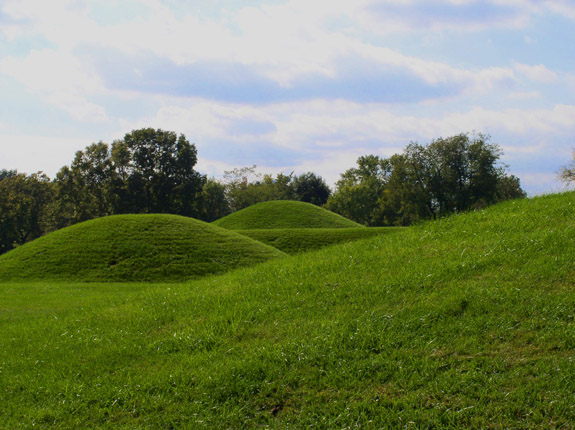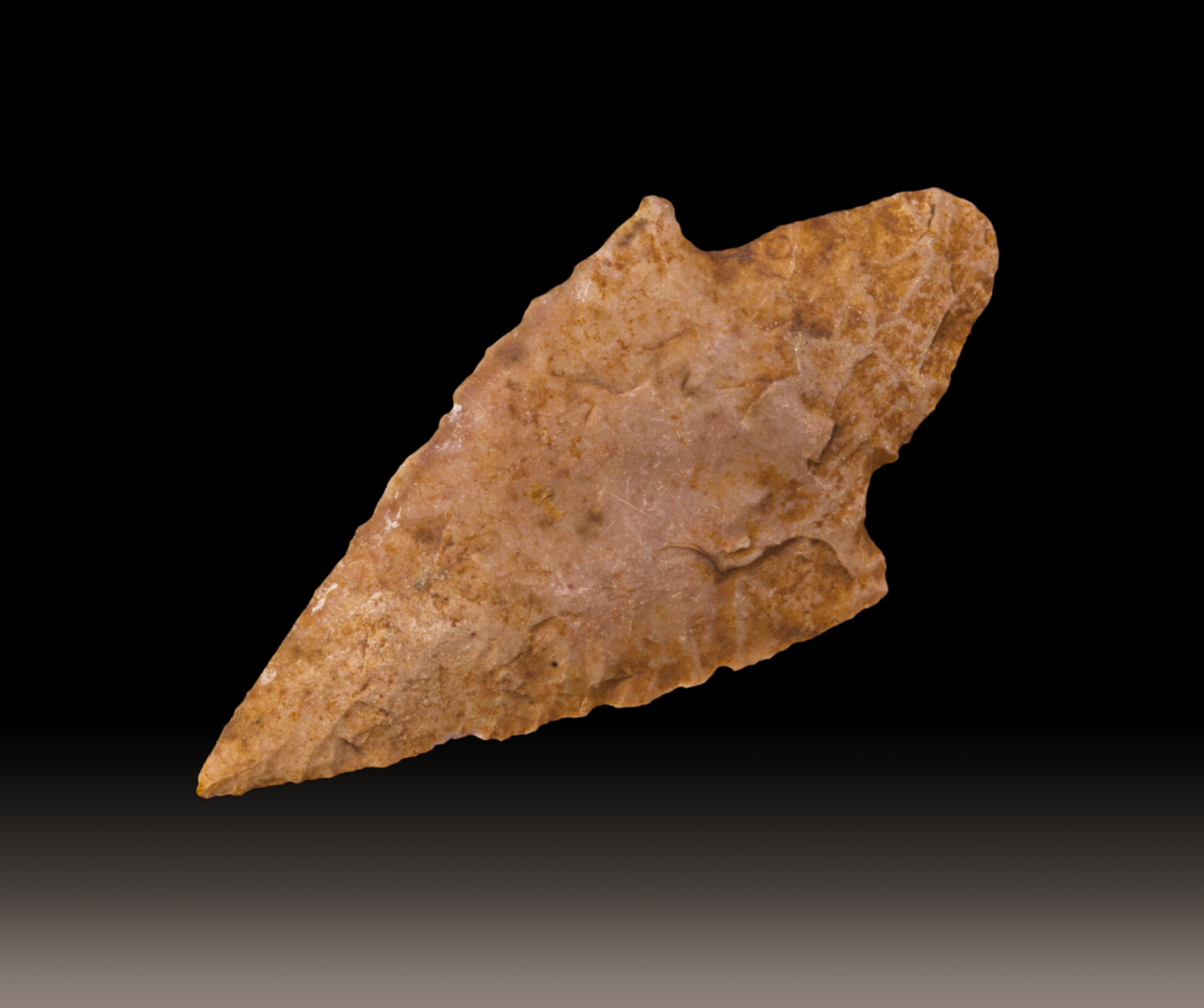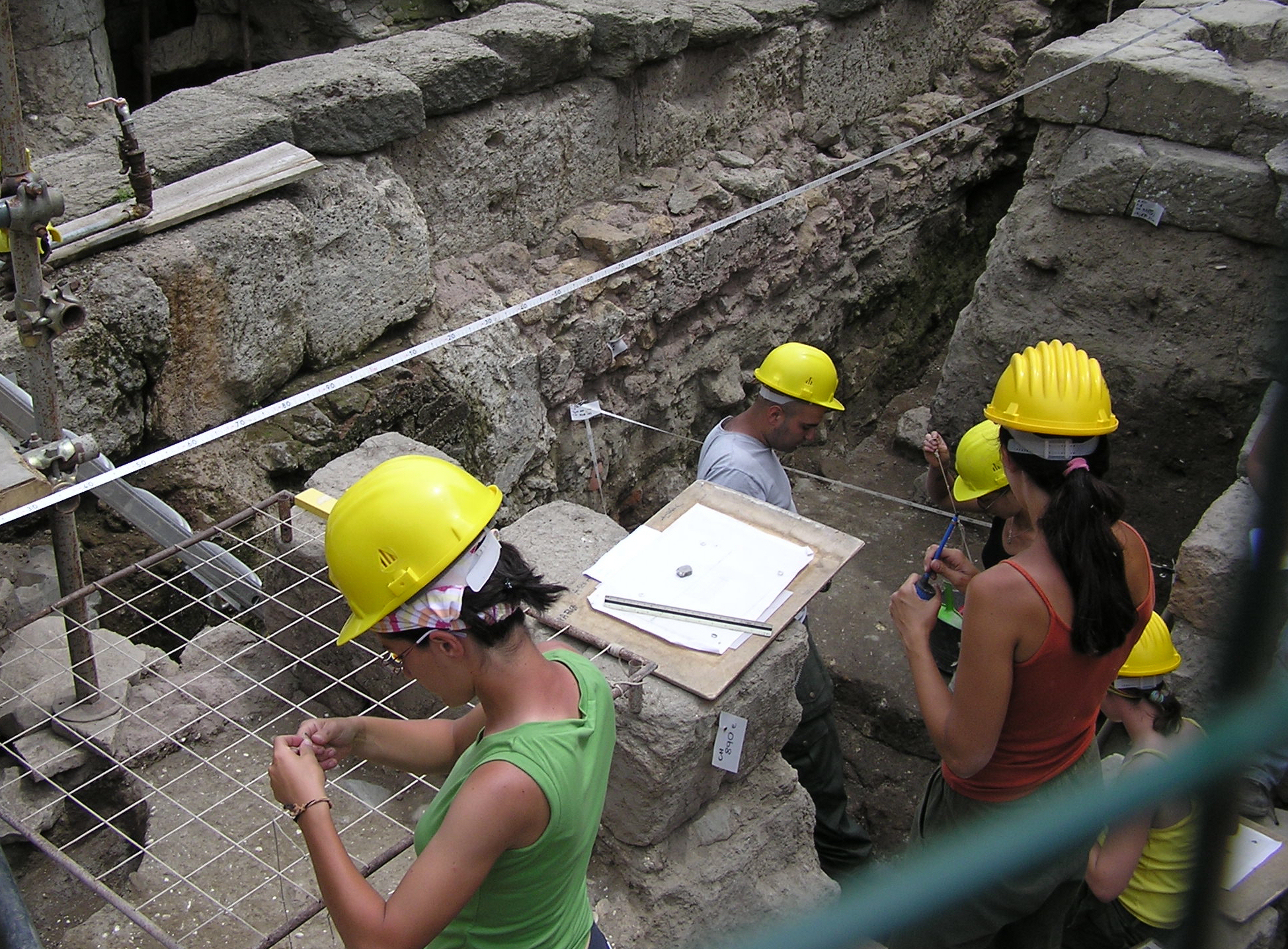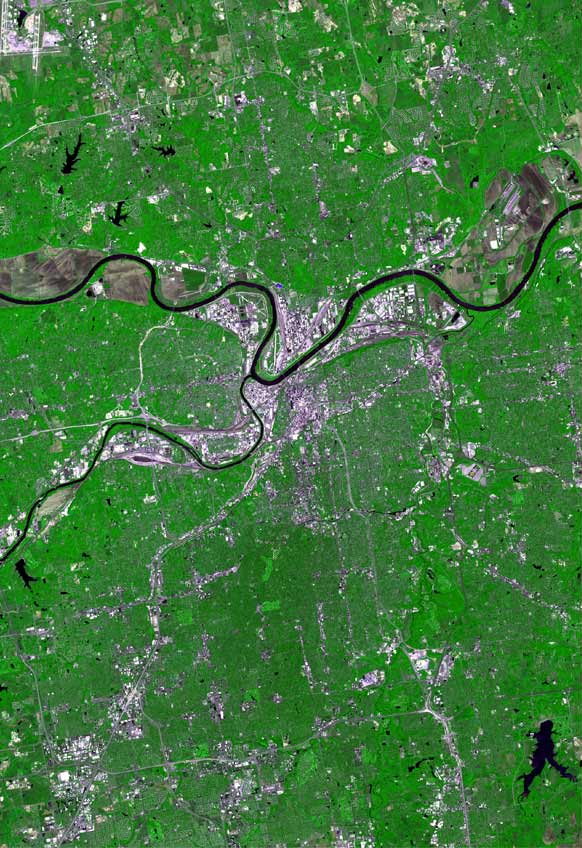|
Lee's Summit, Missouri
Lee's Summit is a city in the U.S. state of Missouri and a suburb of the Kansas City metropolitan area. It resides in Jackson County (predominantly) as well as Cass County. As of the 2020 census, its population was 101,108, making it the 6th most populous city in both Missouri and the Kansas City metropolitan area. It is the most populous city in the state that is not also a county seat. History Early history Humans have occupied the region which includes present-day Lee's Summit for at least 10,000 years. Archeological evidence indicates that humans have occupied settlements within the present-day boundaries of Lee's Summit during all periods as far back as roughly 9,000 years ago. For example, archaeologists have discovered stone arrowheads characteristic of the Dalton tradition in Lee's Summit, indicating that humans occupied the area at least 9,000 years ago. At another site in the city, arrowheads and ceramics characteristic of the Kansas City Hopewell culture were ... [...More Info...] [...Related Items...] OR: [Wikipedia] [Google] [Baidu] |
City
A city is a human settlement of a substantial size. The term "city" has different meanings around the world and in some places the settlement can be very small. Even where the term is limited to larger settlements, there is no universally agreed definition of the lower boundary for their size. In a narrower sense, a city can be defined as a permanent and Urban density, densely populated place with administratively defined boundaries whose members work primarily on non-agricultural tasks. Cities generally have extensive systems for housing, transportation, sanitation, Public utilities, utilities, land use, Manufacturing, production of goods, and communication. Their density facilitates interaction between people, government organisations, government organizations, and businesses, sometimes benefiting different parties in the process, such as improving the efficiency of goods and service distribution. Historically, city dwellers have been a small proportion of humanity overall, bu ... [...More Info...] [...Related Items...] OR: [Wikipedia] [Google] [Baidu] |
Area Codes 816 And 975
Area codes 816 and 975 are telephone area codes in the North American Numbering Plan (NANP) for most of the Missouri side of the Kansas City metropolitan area, the St. Joseph area, and all or part of 15 surrounding counties in northwestern Missouri. Upon its establishment as one of the original 86 area codes in 1947, area code 816 designated the western part of Missouri. bordering with Arkansas, Illinois, Iowa, Kansas, Nebraska, and Oklahoma. The numbering plan area was reduced in 1950 and 1997, and converted to an overlay complex with area code 975 in 2002. History When the American Telephone and Telegraph Company (AT&T) created a universal North American telephone numbering plan for Operator Toll Dialing in 1947, Missouri was divided into two numbering plan areas (NPAs). Area code 816 served points generally north and west of Columbia and Jefferson City, while area code 314 served the eastern third of the state, including St. Louis. In 1950, a third NPA with area cod ... [...More Info...] [...Related Items...] OR: [Wikipedia] [Google] [Baidu] |
Kansa People
The Kaw Nation (or Kanza or Kansa) is a federally recognized Native American tribe in Oklahoma and parts of Kansas. The Kaw people historically lived in the central Midwestern United States. They have also been called the "People of the South Wind","Constitution of the Kaw Nation." ''Kaw Nation.'' 2011. Retrieved 30 April 2012. "People of Water", ''Kansa'', ''Kaza'', ''Konza'', ''Conza'', ''Quans'', ''Kosa'', and ''Kasa''. Their tribal language is Kansa, classified as a Siouan language. The state of wa ... [...More Info...] [...Related Items...] OR: [Wikipedia] [Google] [Baidu] |
Missouria
The Missouria or Missouri (in their own language, Niúachi, also spelled Niutachi) are a Native American tribe that originated in the Great Lakes region of what is now the United States before European contact.May, John D"Otoe-Missouria"''Oklahoma Historical Society's Encyclopedia of Oklahoma History & Culture.'' 2009. Accessed March 16, 2024. The tribe belongs to the Chiwere division of the Siouan language family, together with the Ho-Chunk, Winnebago, Iowa, and Otoe. Throughout the 17th and 18th centuries, the tribe lived in bands near the mouth of the Grand River and Missouri rivers at its confluence with the Missouri River, the mouth of the Missouri at its confluence with the Mississippi River, and in present-day Saline County, Missouri. Since Indian removal, they live primarily in Oklahoma. They are federally recognized as the Otoe-Missouria Tribe of Indians, headquartered in Red Rock, Oklahoma. Name French colonists adapted a form of the Illinois language-name f ... [...More Info...] [...Related Items...] OR: [Wikipedia] [Google] [Baidu] |
Osage People
The Osage Nation ( ) () is a Midwestern United States, Midwestern Native Americans in the United States, Native American nation of the Great Plains. The tribe began in the Ohio River, Ohio and Mississippi River, Mississippi river valleys around 1620 A.D along with other groups of its Siouan languages, language family, then migrated west in the 17th century due to Beaver Wars#Aftermath, Iroquois incursions. The term "Osage" is a French version of the tribe's name, which can be roughly translated as "calm water". The Osage people refer to themselves in their Dhegihan languages, Dhegihan Siouan languages, Siouan language as (). By the early 19th century, the Osage had become the dominant power in the region, feared by neighboring tribes. The tribe controlled the area between the Missouri and Red River of the South, Red rivers, the Ozarks to the east and the foothills of the Wichita Mountains to the south. They depended on nomadic American bison, buffalo hunting and agriculture. T ... [...More Info...] [...Related Items...] OR: [Wikipedia] [Google] [Baidu] |
Hopewell Culture
The Hopewell tradition, also called the Hopewell culture and Hopewellian exchange, describes a network of precontact Native American cultures that flourished in settlements along rivers in the northeastern and midwestern Eastern Woodlands from 100 BCE to 500 CE, in the Middle Woodland period. The Hopewell tradition was not a single culture or society but a widely dispersed set of populations connected by a common network of trade routes. At its greatest extent, the Hopewell exchange system ran from the northern shores of Lake Ontario south to the Crystal River Indian Mounds in modern-day Florida. Within this area, societies exchanged goods and ideas, with the highest amount of activity along waterways, which were the main transportation routes. Peoples within the Hopewell exchange system received materials from all over the territory of what now comprises the mainland United States. Most of the items traded were exotic materials; they were delivered to peoples living in the m ... [...More Info...] [...Related Items...] OR: [Wikipedia] [Google] [Baidu] |
Dalton Tradition
The Dalton tradition is a Late Paleo-Indian and Early Archaic projectile point tradition. It is named after S. P. Dalton, a judge who first discovered these artifacts in Missouri. These points appeared in most of southeast North America from to at least c. 8,400 BCE. According to archaeologist Brian Fagan, Dalton points possess "concave bases with 'ears' that sometimes flare outward" and were used as saws and knives as well as weapons. They often changed form and function because the hunters would sharpen the points over and over, repurposing them into knives, then chisels or Scraper (archaeology), scrapers. A variant on the Dalton point is the Hardaway Site, Hardaway point of North Carolina. See also * * References External links Dalton Tradition in No Carolina Archaeology of the United States Archaic period in North America Paleo-Indian period Projectile points {{US-archaeology-stub ... [...More Info...] [...Related Items...] OR: [Wikipedia] [Google] [Baidu] |
Arrowhead
An arrowhead or point is the usually sharpened and hardened tip of an arrow, which contributes a majority of the projectile mass and is responsible for impacting and penetrating a target, or sometimes for special purposes such as signaling. The earliest arrowheads were made of stone and of organic materials; as human civilizations progressed, other alloy materials were used. Arrowheads are important archaeological artifacts; they are a subclass of projectile points. Modern enthusiasts still "produce over one million brand-new spear and arrow points per year". A craftsman who manufactures arrowheads is called an arrowsmith. History In the Stone Age, people used sharpened bone, flintknapped stones, flakes, and chips and bits of rock as weapons and tools. Such items remained in use throughout human civilization, with new materials used as time passed. As archaeological artifacts such objects are classed as projectile points, without specifying whether they were ... [...More Info...] [...Related Items...] OR: [Wikipedia] [Google] [Baidu] |
Archaeologists
Archaeology or archeology is the study of human activity through the recovery and analysis of material culture. The archaeological record consists of Artifact (archaeology), artifacts, architecture, biofact (archaeology), biofacts or ecofacts, archaeological site, sites, and cultural landscapes. Archaeology can be considered both a social science and a branch of the humanities. It is usually considered an independent academic discipline, but may also be classified as part of anthropology (in North America – the four-field approach), history or geography. The discipline involves Survey (archaeology), surveying, Archaeological excavation, excavation, and eventually Post excavation, analysis of data collected, to learn more about the past. In broad scope, archaeology relies on cross-disciplinary research. Archaeologists study human prehistory and history, from the development of the first stone tools at Lomekwi in East Africa 3.3 million years ago up until recent decades. A ... [...More Info...] [...Related Items...] OR: [Wikipedia] [Google] [Baidu] |
Archeological
Archaeology or archeology is the study of human activity through the recovery and analysis of material culture. The archaeological record consists of artifacts, architecture, biofacts or ecofacts, sites, and cultural landscapes. Archaeology can be considered both a social science and a branch of the humanities. It is usually considered an independent academic discipline, but may also be classified as part of anthropology (in North America – the four-field approach), history or geography. The discipline involves surveying, excavation, and eventually analysis of data collected, to learn more about the past. In broad scope, archaeology relies on cross-disciplinary research. Archaeologists study human prehistory and history, from the development of the first stone tools at Lomekwi in East Africa 3.3 million years ago up until recent decades. Archaeology is distinct from palaeontology, which is the study of fossil remains. Archaeology is particularly important for learni ... [...More Info...] [...Related Items...] OR: [Wikipedia] [Google] [Baidu] |
Missouri Department Of Transportation
The Missouri Department of Transportation (MoDOT, ) is a state government organization in charge of maintaining public roadways of the U.S. state of Missouri under the guidance of the Missouri Highways and Transportation Commission (MHTC). MoDOT designs, builds and maintains roads and bridges, improves airports, river ports, railroads, public transit systems and pedestrian and bicycle travel. In 1979, voters of the State passed a constitutional amendment merging the State Highway Department with the Department of Transportation, becoming the Missouri Highways and Transportation Department. In 1996, the Missouri Highways and Transportation Department became the Missouri Department of Transportation by legislative action. The Missouri Highways and Transportation Commission, a six-member bipartisan board, governs the Department. MHTC members are appointed by the List of governors of Missouri, governor and are confirmed by the Missouri Senate. No more than three commission members ma ... [...More Info...] [...Related Items...] OR: [Wikipedia] [Google] [Baidu] |
Kansas City Metropolitan Area
The Kansas City metropolitan area is a bi-state metropolitan area anchored by Kansas City, Missouri. Its 14 counties straddle the border between the U.S. states of Missouri (9 counties) and Kansas (5 counties). With and a population of more than 2.2 million people, it is the second-largest metropolitan area centered in Missouri (after Greater St. Louis) and is the largest metropolitan area in Kansas, though Wichita is the largest metropolitan area centered in Kansas. Alongside Kansas City, Missouri, these are the suburbs with populations above 100,000: Overland Park, Kansas; Kansas City, Kansas; Olathe, Kansas; Independence, Missouri; and Lee's Summit, Missouri. Business enterprises and employers include Oracle (formerly Cerner Corp), AT&T Inc., AT&T, BNSF Railway, GEICO, Asurion, T-Mobile US, T-Mobile (formerly Sprint Corporation, Sprint), Black & Veatch, AMC Theatres, Citigroup, Garmin, Hallmark Cards, Macquarie Group, Waddell & Reed, H&R Block, General Motors Corporation, G ... [...More Info...] [...Related Items...] OR: [Wikipedia] [Google] [Baidu] |










